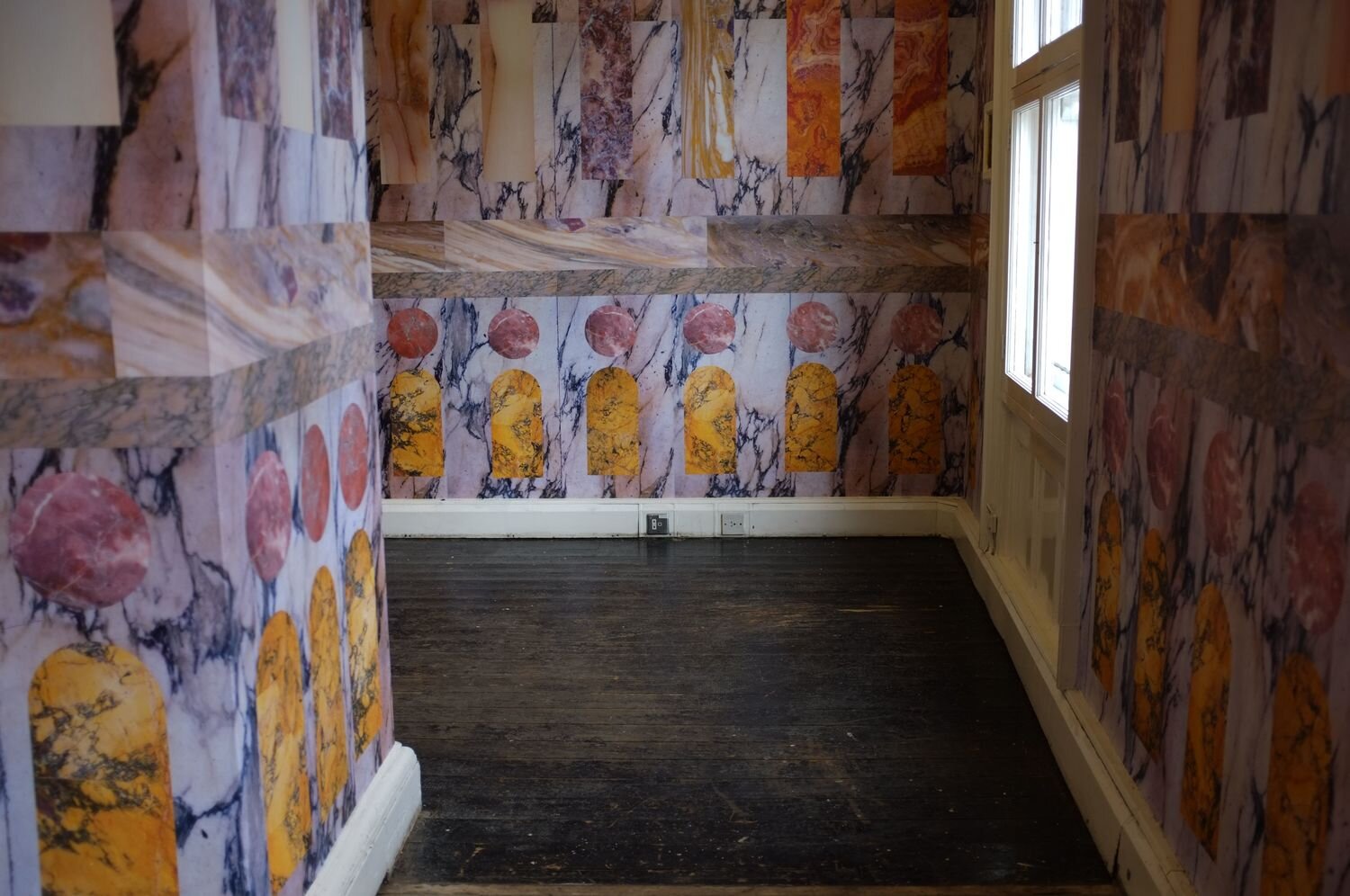*The same week the seriousness of the COVID-19 crisis became clear, starting with the closure of schools, we invited artist, Austin Hearne, to take over Periphery Space for PERIPHERIES 2020, scheduled to open August bank holiday weekend. Alas, in the ensuing crisis everything has changed. So we have decided to push the exhibition to 2021. Same time, same place, same artist, Austin will have more time to build on what was already an ambitious proposal, which included the artist collective, Child Naming Ceremony. The following is our press release for the event.
Novelist Martin Amis once said that equality for women would not happen instantaneously, like the capsizing of a boat, but would take serious time. His best friend and unconsummated love, Christopher Hitchens, capsized the boat of religion time and again, knowing very well that he was in it for the long haul, but boat by boat, wave by wave, argument by argument, his words would eventually reach the shore. Art and religion separated from each other's influence in the eighteenth century. We have had modern moments when art and religion got back together: when viewers bowed down and cried in front of Mark Rothko paintings in a Texas Chapel in the 1960s; when American artist Andres Serrano photographed a small plastic crucifix submerged in a glass tank of the artist's urine in the '80s. More locally and timely, David Godbold, who exhibited at Periphery Space in 2018, continues to broach the religious subject in his rhetorically playful drawings with littered miniature of the everyday. Irish artist Austin Hearne has somehow brought art and religion back together, including all the modern-day associations that come with bringing them back together. The relationship between art and religion is one that is very difficult to balance—the subject and established aesthetic of the church has a way of overpowering art so you don't see contemporary art anymore, you just see religion and history. Since his MFA show at the National College of Art & Design in 2016, where he applied wallpaper incorporating a collage of photographs of what he calls "marble geologies" of churches he travelled to, Austin has managed to bring religion into the fold of his art through photography, sculpture, installation and performance, all of which have a painterly sensitivity in his use of wax and gold leaf. Austin is not an ironist; his work is not propaganda either. The achievement in his work is: you don't see religion first, you see art first, then you think about religion and all the baggage that comes with that address and "redress".











